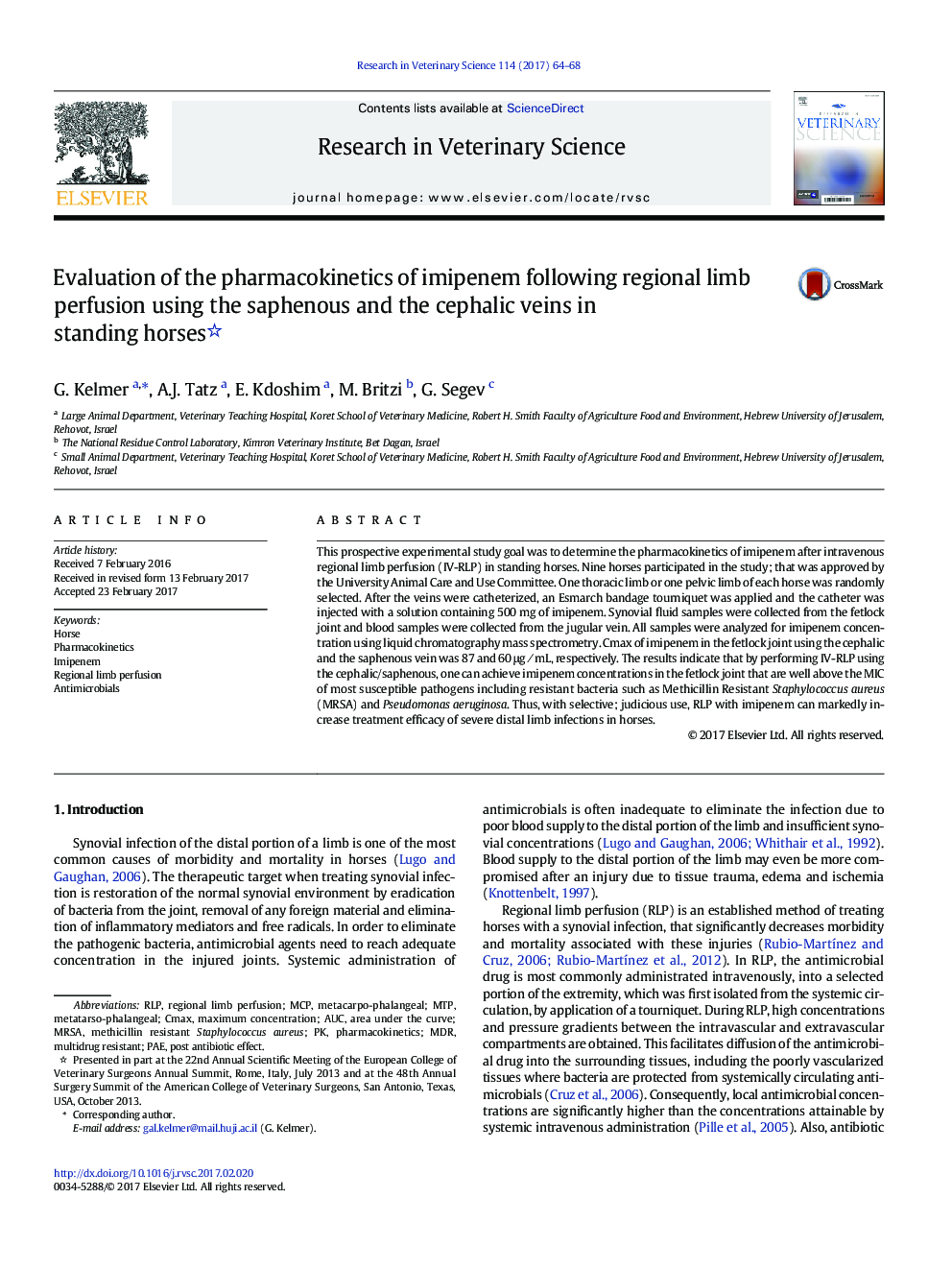| Article ID | Journal | Published Year | Pages | File Type |
|---|---|---|---|---|
| 5543917 | Research in Veterinary Science | 2017 | 5 Pages |
â¢Forelimb fetlock imipenem was 87 mcg/mL after cephalic regional limb perfusion.â¢Hind limb fetlock imipenem was 60 mcg/mL after saphenous regional limb perfusion.â¢Regional limb perfusion, yields synovial imipenem above the MIC of most common bacterial isolates in horses.â¢Imipenem regional limb perfusion can increase synovial infection treatment efficacy.
This prospective experimental study goal was to determine the pharmacokinetics of imipenem after intravenous regional limb perfusion (IV-RLP) in standing horses. Nine horses participated in the study; that was approved by the University Animal Care and Use Committee. One thoracic limb or one pelvic limb of each horse was randomly selected. After the veins were catheterized, an Esmarch bandage tourniquet was applied and the catheter was injected with a solution containing 500 mg of imipenem. Synovial fluid samples were collected from the fetlock joint and blood samples were collected from the jugular vein. All samples were analyzed for imipenem concentration using liquid chromatography mass spectrometry. Cmax of imipenem in the fetlock joint using the cephalic and the saphenous vein was 87 and 60 μg â mL, respectively. The results indicate that by performing IV-RLP using the cephalic/saphenous, one can achieve imipenem concentrations in the fetlock joint that are well above the MIC of most susceptible pathogens including resistant bacteria such as Methicillin Resistant Staphylococcus aureus (MRSA) and Pseudomonas aeruginosa. Thus, with selective; judicious use, RLP with imipenem can markedly increase treatment efficacy of severe distal limb infections in horses.
